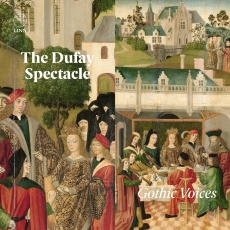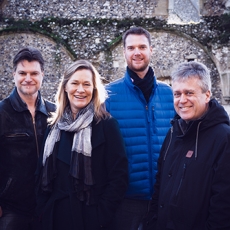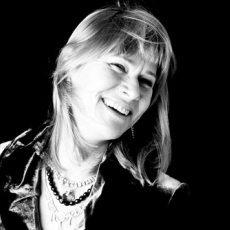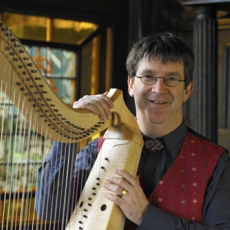Gothic Voices - The Dufay Spectacle - American Record Guide
The Gothic Voices have a long and distinguished recording history, first with their founding director, Christopher Page, who helped develop the vocal-only “English a cappella heresy”. In its more recent incarnation, the ensemble has started to include instrumentalists and expanded its repertoire to include new compositions, such as the recent ‘Mary, Star of the Sea’, which combines medieval and early renaissance English music with new compositions by Joanne Metcalf and Andrew Smith (Jan/Feb 2017: 219).
This new collection of songs and motets by Guillaume Du Fay (as it is now often spelled), adds a fifth voice (Clare Wilkinson, mz) to the core vocal quartet of Gothic Voices and four instrumentalists: Jane Achtman (fiddle), Keith McGowan (douçaine [a soft double-reed instrument] and shawm), Emily White (sackbut), and the versatile Andrew Lawrence-King (harp, organ, and psaltery). The four motets (‘O sancte Sebastiane’, ‘Salve flos Tuscae gentis’, ‘Ecclesiae militantis’, and ‘Apostolo glorioso’) are given the “big-band” treatment—the instruments are added when the lower voices (tenor and contratenor) enter with their repeating rhythmic patterns. The French and Italian songs are given a variety of treatments from the purely vocal (‘Vergene bella’ and ‘Mon bien m’amour’) to various mixtures of voices and instruments (as in the well-known ‘Resvellies vous’). In contrast to the earlier a cappella interpretations by Gothic Voices, this mixing of arrangements makes for a much more interesting recording. There is still the clarity and importance of the words, which may account for why Ms White and her sackbut are only in the motets and the final arrangement of Dufay’s New-Year’s chanson, ‘Ce jour de l’an’, for the complete group. Added to the sonic variety of the recording are instrumental arrangements of Dufay’s music, mostly from the 15th Century Buxheimer Orgelbuch, though each is also adapted to different combinations of instruments.
The decision to mix voices and instruments brings Gothic Voices more into the mainstream of interpretation for this music, as was heard in a number of earlier recordings of Dufay’s secular music (J/F 1997, J/A 2006, S/O 2006, M/J 2008, J/A 2008). I will admit to a preference for vocal performances of the motets, such as by Blue Heron (S/O 2007); but Gothic Voices still sets a high standard for sensitive interpretations of this repertoire.



